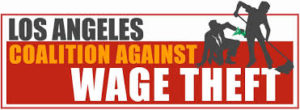Wage theft is a “growing and pervasive problem” that robs workers of an estimated $50 billion a year.
That’s according to a report from the Economic Policy Institute (EPI).
The report finds that at least $2 billion in stolen wages was recovered for workers across the United States in 2015 and 2016.
The report was authored by EPI labor counsel Celine McNicholas, research assistant Zane Mokhiber, and intern Adam Chaikof.
The findings come from a survey of state labor departments and attorneys general, and data from the Department of Labor, along with a report on private, civil litigation class action settlements.
Wage theft can take many forms, including: minimum wage violations, overtime violations, tipped minimum violations, and employee misclassification.
“Wage theft is a growing and pervasive problem that robs workers of billions of dollars every year,” said EPI Labor Counsel Celine McNicholas. “Yet little progress has been made to address this epidemic. State and federal enforcement agencies often lack adequate resources to effectively deter employers from violating existing protections and it is increasingly harder for workers to successfully file private claims as they are forced to sign-away their right to go to court as a condition of employment.”
The authors note that it is impossible to determine the exact amount of wages stolen from workers, because the Department of Labor and state recovery figures under represent the problem of wage theft.
But the authors estimate that low-wage workers in the United States lost more than $50 billion to all forms of wage theft in 2016.
A recent EPI study that found that one of the largest forms of wage theft – minimum wage violations – impacts 17 percent of low-wage workers in the 10 most populous states.
On average, workers suffering minimum wage violations are cheated out of $64 a week, or $3,300 annually.
Although wage theft is illegal, laws protecting workers are rarely enforced.
In 2016, the Department of Labor’s Wage and Hour Division had around 1,000 investigators responsible for 7.3 million workplaces.
The probability of any specific workplace being investigated for wage theft in a given year is around 0.01 percent.
A recent study found that 14 states, most of which use the federal minimum wage, either lack the capacity to investigate wage theft claims or lack the ability to file lawsuits on behalf of victims.
Last week the Trump administration took their first major step toward allowing employers to legally take tips earned by the workers they employ.
Under the Department of Labor’s proposed rule, as long as the tipped workers earn minimum wage, the employer can legally pocket tips pooled from their servers. Workers in restaurants and bars are much more likely to suffer minimum wage violations than workers in other industries, and this could exacerbate the problem.
“It is the Department of Labor’s job to enforce our nation’s worker protection laws and ensure that working people are paid fairly for their labor, not create mechanisms for robbing them,” McNicholas said. “When policymakers wonder why working Americans are frustrated, they should consider the toll that wage theft takes on workers. It is fundamentally unfair to work hard and play by the rules while corporations rig the system against working people—literally taking money out of their pockets.”
